- Home
- Diane Fanning
Written in Blood Page 2
Written in Blood Read online
Page 2
Peterson went into the kitchen and stood in front of the sink. He turned on the water and put his hands under its flow. Wilkins ordered Peterson to stop and he complied. Mike and Todd Peterson and Ben Maynor were then sent out onto the patio with an officer. Between the door and a table, they walked past a splash of spilled liquid and a silver tea kettle—an odd location for an item that seldom escaped the kitchen.
Wilkins sent home the neighbors who had been drawn to the house by the flashing lights. A few minutes later, Wilkins saw Christina Tomasetti again. She had attended a party with Todd earlier that evening and was now in the foyer area by the foot of the spiral stairs with Heather Whitson. He directed them into the den. He advised them not to talk to each other so that the perceptions each one had were not tainted by the memory of the other one.
At 3:09, Investigator Art Holland stirred from his sleep at the sound of the page from CID Sergeant Fran Borden, who was on the scene but had not yet entered the house. With his many years of experience in criminal investigation, it was not unusual for him to receive a call in the middle of the night. He was a committed officer and loved working homicide. Some cases were hard to believe, some were hard to solve, but he welcomed the challenge and relished the added knowledge that every case brought to him.
He thought this call to the wealthy, older community of Forest Hills would be a routine matter. To the best of his knowledge, an elderly woman fell down a flight of stairs in a wheelchair—a tragic accident, but nothing more. He figured he’d make a brief appearance, assess the situation and return home to his bed. He told his wife that he’d probably be back in an hour. It would be twenty hours before he saw her again.
When Sergeant Borden entered the residence, he observed smeared blood on a kitchen drawer and on the glass-front cabinet above. That was the first red flag for this seasoned investigator—the first indication that things were not as they seemed.
When he observed Kathleen’s body, he was surprised by its position—it was in a straight line, her neck in complete alignment with her spinal cord. That was the second red flag.
Then he noticed that the blood coating her body—the massive amount around her waist area, in particular—had a discoloration that indicated it had begun to dry. That was the third red flag.
He was now convinced that the scene was not consistent with any other accident, in his experience, where a victim had fallen down the stairs. This was a suspicious death. This stairway was a crime scene. He exited the house to await the arrival of detectives. Borden made the official crime scene declaration at 3:40 A.M.
Outside, the cool, damp night air grew chillier. Michael Peterson complained about the cold and attempted to enter the home several times to get a change of clothing. Wilkins tried to locate the sweatshirt and pants Peterson requested, but could not find them. He allowed Mike to go into the house and get them from a linen room off the kitchen. When Mike returned to the patio, he did not change clothes, but continued to complain.
Just before 4 A.M., Detective Holland of homicide and a domestic violence detective arrived at the house. Something clicked in Holland’s head at first sight—too much blood. It did not look like a fall. He and Borden conferred outside and decided a search warrant was needed before they re-entered the premises. Holland went to headquarters to draw up the necessary paperwork and obtain the signature of a magistrate.
Canine Officer Trent Hall was on Durham Freeway near route 15/501 at a traffic stop when he heard the call over the radio. Half-listening, he heard something about officers responding to 1810 Cedar Street. Immediately, he thought of someone he knew and liked, Mike Peterson, but could not recall his exact address. From the number of officers being called to the scene, he knew this was not routine and he was worried about his friend.
When he could not get details over the radio, Hall went to the scene to make sure it wasn’t the Peterson house and that Mike was okay. He parked in front of the gate, blocking the entry of other cars. He was told about Kathleen’s death and asked if he could be of any assistance. When he was told he was not needed at this time, he strung crime-scene tape across the entrance to the driveway and left the scene.
4
The chill night air drove the men inside, where they joined the two women in the den. Heather requested to use the bathroom. None of the officers knew where to find one, so Heather led them to the upper floor via the foyer stairs. They checked the room before she entered. They waited outside until she was done. Then they checked the room again and escorted her downstairs.
Christina requested a trip upstairs, and the process was repeated. Christina told the officers that she had brought Todd Peterson to the house and that they had arrived right after the fire department had.
When Christina returned, Todd told the officers that Michael and Kathleen were the only ones in the house at the time of the accident. “They both drink heavily. If you want my opinion, they were probably shit-faced and she fell,” he said.
The police had their hands full in the den. Three of their charges were not a problem at all—the two women sat side by side on the sofa and Michael Peterson paced the floor. But Todd Peterson kept trying to leave the room, was asking to talk to his lawyers, asking for a time frame for when they could leave, asking for a grief counselor—asking for anything and everything that crossed his mind—and talking to the drunk Ben Maynor at every opportunity. Wilkins was paged to the den, where he explained again the need to refrain from verbal communication, and requested that they remain in one locale. Mike said, “What is this? Do I need to call a lawyer?”
When Ben and Todd would not stop their whispered conversations, the two women were taken into the living room, where each sat on a separate couch and were told there was to be “one hundred percent no talking.” Both complied without a word—stretching out on the sofas to take naps with blankets the officers supplied.
In the den, Ben, Michael and Todd got the same message: “In order for you to stay together in this room, there is one hundred percent no talking. If you talk, you will be separated.”
The officers felt some discomfort with what they had to do. It was a suspicious death. But what if the suspicions were unfounded? If so, Michael Peterson was nothing more than a grieving widower and they were preventing his son from comforting him.
Michael Peterson removed his bloodstained clothing, dropped it all to the floor and pulled on the sweatpants and sweatshirt. Ben Maynor picked up the discarded clothing and tried to turn them over to a uniformed officer. He would not accept them, because chain of custody procedures required that an ID tech remove the clothing from the scene.
Ben placed the garments on the windowsill near Mike’s desk as requested. They were instructed not to go near the clothing. The two dogs were not eager to follow these orders, but someone shooed them away every time their twitching noses approached the window.
In the den, Mike settled down at his computer. He surfed the Internet and checked his email. He had stopped crying, but mumbled a lot—at times, mentioning the email his wife received about a meeting she was supposed to attend.
Todd Peterson picked up a phone and called his father’s brother, a civil attorney in Reno, Nevada. “Uncle Bill, Kathleen is dead.”
Bill Peterson dropped the phone to the floor. When he retrieved it, his shock was obvious to his nephew. “I need you to calm down,” Todd said, “and I need to ask you some questions.”
Todd went on to describe his view of the situation at the house to his uncle: The family was sequestered, two women were not being allowed to use the bathroom, crime-scene tape was all over the place, one police officer was being abusive, and they were being treated as suspects. Then he asked, “Is this normal?”
A cold dread spread through Bill’s chest. He knew without being told that this was a custodial investigation and it appeared the police had fixated on his brother as a probable murder suspect. “It’s absolutely not normal,” he said.
“What should I do?” Todd asked.
“First thing, go up to your dad and instruct him not to say anything.”
Todd said that a police officer was talking to him. In fact, he said, the cop had his arm around Mike’s shoulders.
“Go up to that police officer,” Bill ordered, “and tell him that your dad is represented and his attorney is on the phone and has instructed him not to talk anymore. And I want to talk to the chief detective on the scene.”
Bill Peterson was cool and calm in the courtroom. He was bright and articulate, and he represented his clients well. But this wasn’t just any client—it was his brother. And it wasn’t a civil squabble over money—it was a criminal matter, and the most serious felony of all.
After a moment, Todd returned to the phone. “Dad will follow your instructions, but there is no detective in the house to talk to you.”
Bill uttered a few hollow words of assurance, hung up and dialed the downtown Durham police station. “This is Bill Peterson. I understand that you are doing a crime scene investigation at my brother’s house at 1810 Cedar Street. I am his attorney, and I do not want him spoken to until such time as I have gotten to Durham.”
“Why are you telling me this?” the desk officer asked.
“The reason I am telling you this is because no one at the scene will talk to me.”
“Wait a minute and I’ll get back to you.”
Bill clutched the receiver, his thoughts getting darker with every passing second. The officer called investigator Holland’s desk and asked him if he would talk to Bill. Holland was busy typing the paperwork for a search warrant and had nothing to say to Bill—or any attorney—at that time.
The desk officer then told Bill, “Your instructions are understood.”
And that was the end of their conversation. Bill made arrangements to leave for Durham first thing the next morning.
Exasperated officers switched positions hoping to get Todd to pay minimal attention to someone. But no matter who spoke to him, Todd continued to make phone calls, whisper consoling words to his dad and talk to Ben.
Outside, the Mobile Police Station—a retrofitted recreation vehicle—arrived on the scene. It would give officers a place to make reports, use communications equipment and take a break. Beside it, investigators waited for Holland to return with the search warrant.
In the den, to everyone’s relief, Todd finally fell asleep on the floor with the dogs—at last, he was not talking. Michael was writing on a notepad.
When Borden told Corporal Kim Gregory that the victim reportedly died from a fall down the stairs, she laughed—the first light moment in the house in hours. She thought Borden was making fun of her for the fall she took down the stairs the day before. He called her clumsy then—she thought he was ribbing her now. The seriousness of his demeanor penetrated and wiped away all traces of amusement.
At 6:05, District Attorney Jim Hardin’s home telephone rang. He listened to a briefing about the events of the night at 1810 Cedar Street. He was grateful for the call. There was nothing worse in his profession than being caught unaware when the reporters started to phone.
Lieutenant Art Holland returned with a search warrant. He was now the lead investigator. The document granted the Durham Police Department the authority to seize any forensic evidence, possible weapons, documents and a measurement of the premise. It also granted permission for taking video footage and still photographs. In short, they were entitled to take possession of “[ …] any and all evidence that may relate to the Death Investigation.”
Holland pulled on protective gloves and booties and entered the house. Dan George donned a head-to-toe Tyvek suit and followed him in. When Holland served the warrant, Mike was speechless and the washed-out expression on his face seemed frozen in place. As Holland read the warrant aloud, Todd snatched the copy from his father’s flaccid fingers and read along. Then he turned a face of stunned silence to the investigator. As clearly as if spoken, two questions scratched across his face: “What are you doing? Why are you doing this?”
Holland and George did a walk-through to get a feel for the scene and then the evidence gathering began. George, armed with a video camera, taped a 360-degree view from the entrance. Then, he proceeded through the foyer, through the dining room and into the kitchen. Finally, he shot the body at the foot of the stairs. ID Tech Angie Powell followed him every step of the way, shooting the same scenes he did with a still camera.
Dr. Kenneth Snell of the medical examiner’s office responded to the scene, suited up and went inside. A quick assessment of the body in situ revealed a four-inch laceration to the back of Kathleen’s head. Snell said the injury was possible with a fall, but an autopsy was needed to be certain.
Snell and George lifted Kathleen’s body from the stairs and placed her in a body bag. The pooled blood dropped from the seat of her pants as they moved her. The blood elsewhere on her clothing was damp.
Snell continued to manipulate the body and discovered three more major injuries to the head, as well as other minor lacerations, bruises and abrasions. After ten minutes, he ended his examination knowing he could not make any definitive determinations at the scene.
He told Lieutenant Holland, “If it is not a fall in the stairs, it was a rod-like instrument. You should be looking for something like that.”
George removed the bloody Rolex watch from Kathleen’s wrist and bagged it as evidence. The body bag was zipped shut.
George retrieved Mike Peterson’s clothing from the windowsill in the den. He placed the shorts and shirt in one paper bag and his watch in another. He did not use plastic bags because their moisture-retaining properties would cause the blood to degrade. The shorts and shirt were still damp, but no blood transferred to his gloves. From the area by the stairwell, he picked up the shoes and placed them in one bag, the socks in yet another. He labeled each bag with the location where he found each item, sealed it with evidence tape and added his initials.
He then requested Todd Peterson’s clothing. Accompanied by an officer, Todd went upstairs to change. He returned and handed his jeans, a knit shirt, a dress shirt, shoes and socks to George. Those items, too, were encased in paper bags, marked, sealed and placed in the designated area near the door.
The mortuary services arrived at 8:30 A.M. to remove Kathleen Peterson’s body and deliver her to the medical examiner’s office in Chapel Hill. Now that she had completed photographing the scene, Angie Powell was free to travel with the body to ensure the chain of custody for any evidence taken at the autopsy.
When Todd Peterson stepped out of the house, a police lieutenant asked, “Has anyone asked you for a statement?”
“No,” Todd replied.
“Would you be willing to make a statement?”
“No,” he said again.
Michael Peterson followed his son out the door, but did not say a word to anyone.
Mike was the guardian of two daughters of deceased friends, George and Liz Ratliff. He called Tulane University in New Orleans and summoned Margaret Ratliff home. He placed a call to Martha at the University of San Francisco to let her know she was needed there, too.
Late morning, the telephone rang at the northern Virginia home of Kathleen’s sister Candace Zamperini. Candace answered the call. It was Mike Peterson. “I want to speak to your husband,” he said.
Her husband, Mark, was not at home. Candace gave him Mark’s cell phone number. Michael would tell her nothing, but she knew from the tone of his voice that something was amiss. Her imagination ran through the possibilities. Perhaps Kathleen lost her job. Maybe her employer was going bankrupt or the stock plummeted down so far it was close to valueless. Neither sickness nor death crossed Candace’s mind.
An hour later, Mark arrived at the house. Candace took one look at his horror-stricken face and her first fearful thought was that something had happened to one of her daughters. Her eyes scanned her husband’s face for hidden answers.
Mark led her to the porch outside of the kitchen. “I have some re
ally, really bad news,” he said. “Kathleen fell,” he continued. “And she’s dead.”
Candace fell to the floor, and fell apart. When she regained a modicum of composure, she wanted to know what happened. “How?” she asked him. “Did she fall off a ladder while decorating the tree?”
Mark could not give her any answers—Michael told him no more than that. When they called him back, the only additional detail he provided was that Kathleen had fallen down the stairs.
Mark phoned the northern Virginia home of Kathleen’s other sister Lori, and talked to her husband, Bruce Campell—he, in turn, informed his wife. Candace called a good friend of her mother’s. That friend and another woman delivered the news to Veronica Hunt at her home in Florida. They stayed with her to offer any comfort they could. Veronica crumbled—no mother should live to bury her daughter.
At the Tennessee home of Kathleen’s brother, Steven Hunt, the phone rang, then flashed off. The caller ID readout told Steve’s wife, Cynthia, that it was Kathleen’s number. The phone rang again. It was Michael. He was sobbing and incoherent.
“What’s wrong? What’s wrong?” Cynthia asked.
Michael’s caterwauling turned off as if he had flipped a switch. “Kathleen’s dead.”
“What happened?”
“She fell down the stairs.”
“Are you alone?” Cynthia asked.
He told her that his boys were there and his brother, Bill, was on the way. “I cannot talk to the Hunts. You have to tell your husband.”
Steve was in Puerto Rico working on an engineering project for the government. Cynthia reached him there. “There’s no way she fell down those stairs,” Steve said. “He must have had something to do with it.” He flew home to Tennessee the next day.

 Death on the River
Death on the River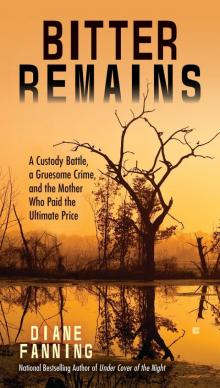 Bitter Remains
Bitter Remains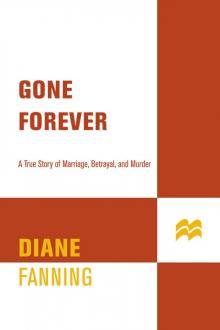 Gone Forever
Gone Forever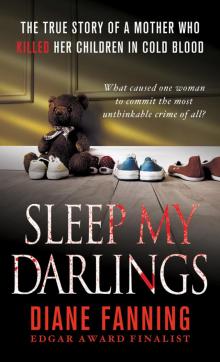 Sleep My Darlings
Sleep My Darlings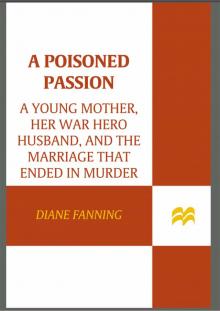 A Poisoned Passion
A Poisoned Passion Through the Window: The Terrifying True Story of Cross-Country Killer Tommy Lynn Sells (St. Martin's True Crime Library)
Through the Window: The Terrifying True Story of Cross-Country Killer Tommy Lynn Sells (St. Martin's True Crime Library) Chain Reaction
Chain Reaction Baby Be Mine
Baby Be Mine The Pastor's Wife
The Pastor's Wife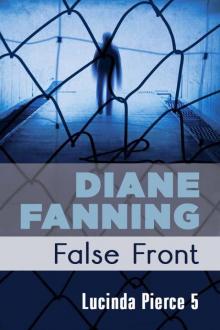 False Front (Lucinda Pierce)
False Front (Lucinda Pierce)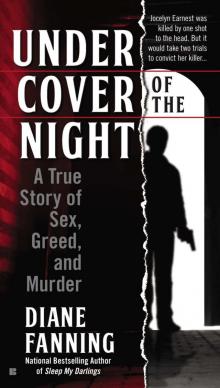 Under Cover of the Night
Under Cover of the Night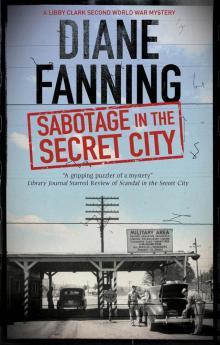 Sabotage in the Secret City
Sabotage in the Secret City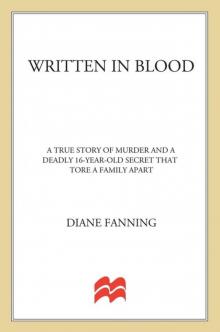 Written in Blood
Written in Blood Treason in the Secret City
Treason in the Secret City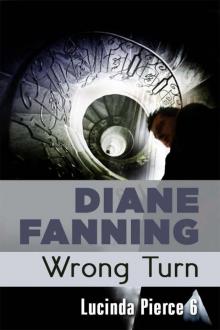 Wrong Turn
Wrong Turn Under the Knife
Under the Knife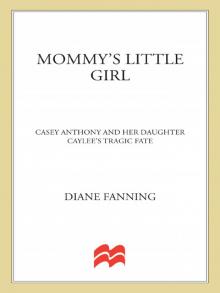 Mommy's Little Girl
Mommy's Little Girl Scandal in the Secret City
Scandal in the Secret City